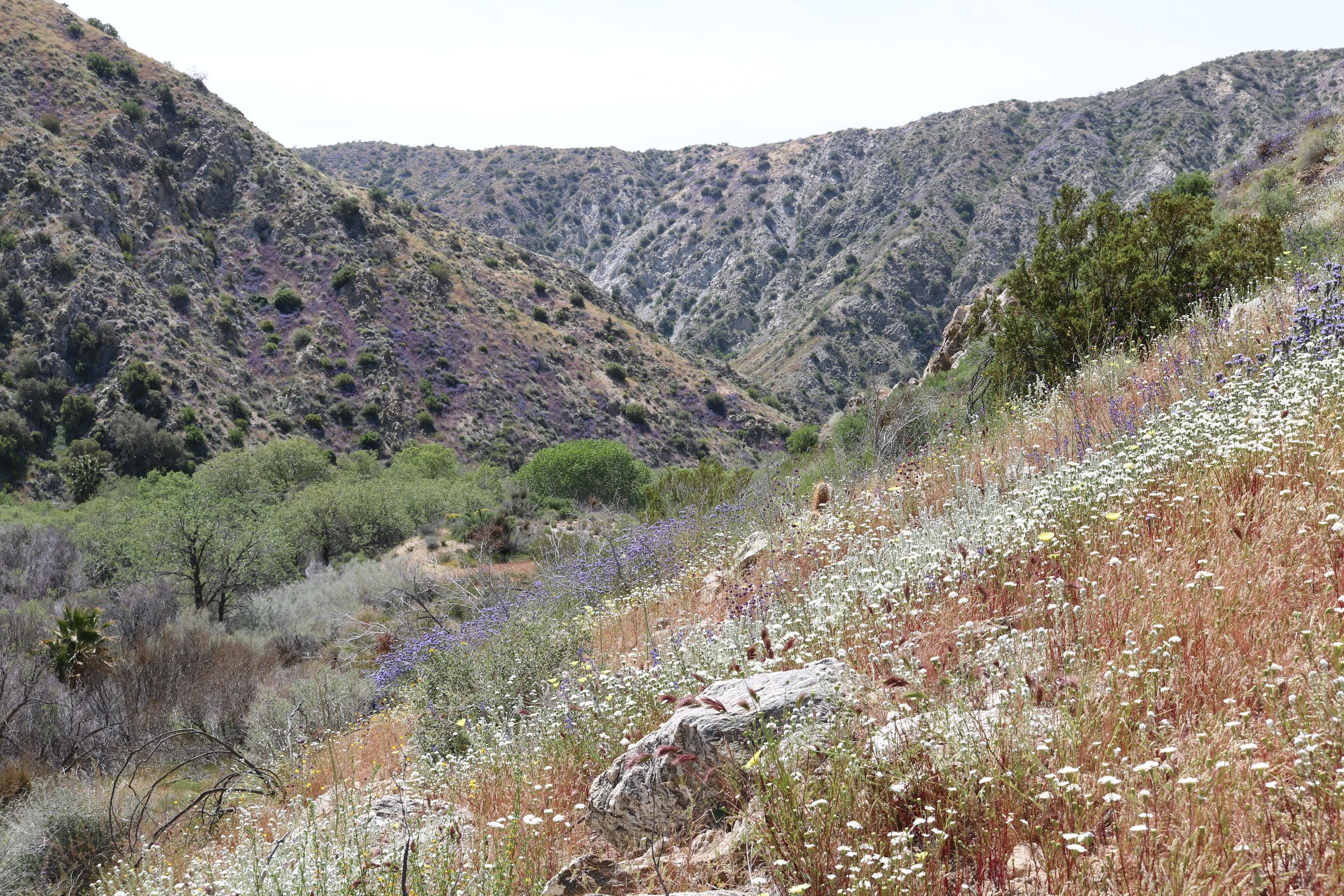Overcoming barriers to nature
By Ella Richie DeMaria, Social Media and Outreach Coordinator
Connecting to the outdoors can have a profoundly positive, lifelong effect on wellbeing, individually and communally.
One way MDLT fosters this dynamic is through educational events. MDLT continually conducts field trips, hikes, and lectures for K-12 students of the Morongo Basin to forge a deeper connection between people and place. From a Star Party in Mojave Trails National Monument, to a walk through our Mojave Desert Discovery Garden, to an exploratory birdwatching hike through Big Morongo Canyon Preserve, 2023 has been a year of outdoor educational firsts for many area students.
“Some students have never used binoculars or even been on a nature hike.”
“Some students have never used binoculars or even been on a nature hike. It was amazing to see smiles and excitement as students observed birds, plants, wildflowers, other wildlife,” said Yucca Valley Elementary teacher Christine Beasley of the Big Morongo field trip on April 18. “This field trip allowed us to expand the learning space of the traditional classroom to the outdoor classroom.”
Smiles and excitement abounded at the sight of wildlife, like a kingsnake seen slithering through the understory.
Indeed, the outdoor classroom environment proved especially inspiring to the Yucca Valley High School students at an Amboy Crater Star Party featuring the 29 Palms Astronomy Club on April 21. “Just getting everybody out here and seeing the students enjoy doing this stuff, I usually don’t get a lot of it during class,” said physics teacher Matt Martin. The outdoor classroom — with a sky full of stars and biofluorescent scorpions afoot — was a captivating setting for all in attendance. Students were engaged and excited to learn about astronomy in an up-close-and-personal way.
“For students of any age, but particularly in high school, having the exposure to nature, to our natural surroundings, is very important,” said Starman Steve of the 29 Palms Astronomy Club. “Living in an area where the beauty and epic surroundings are so accessible, to come out to a place like Amboy which is a little bit further away, really heightens that experience, takes them that much further into the wilderness, and exposes them to some truly stunning sights in the night sky.”
“The great expense, dirt and discomfort, as well as the perceived and actual dangers of outdoor adventures are among the top barriers to enjoying the outdoors.”
That exposure to nature, unfortunately, is lacking. In an informal MDLT 2021 survey of Morongo Basin students and educators, several area students responded that they do not go outdoors — at all. Despite being a world-famous destination for outdoor activity, many of the students surveyed have barely seen their surrounding desert.
Unfortunately, this is the case nationally, too. A 2022 Outdoor Participation Trends report from the Outdoor Industry Association found that the frequency of youth participation in outdoor experiences is on the decline. A 2016 report by the Outdoor Foundation concluded that “the primary reasons why more young people aren’t spending time outdoors include indoor technologies; time management issues; poor parental influence; and the lack of transportation. … The great expense, dirt and discomfort, as well as the perceived and actual dangers of outdoor adventures are among the top barriers to enjoying the outdoors.”
The results, studies show, are “higher rates of physical and emotional illnesses,” according to investigative journalist and author Richard Louv. Louv coined the term “nature deficit disorder” to describe the range of behavioral issues that arise when children and adults do not spend enough time outdoors. It’s a “metaphor… to describe what many of us believe are the human costs of alienation from nature,” he said in his 2016 interview with Greater Good Magazine.
Outdoor education, therefore, is not just a matter of learning about our planet, but ourselves, and our place in the ecosystem. That is why in our efforts to conserve and protect California’s deserts, we need to expand our educational reach. A community that cares for its desert cares for its children too.
Find out more about MDLT’s educational programs here.
These programs were made possible by the Inland Empire Community Foundation and the Outdoor Equity Grants Program, created through AB 209 and administered by California State Parks, Office of Grants and Local Services. Thank you to the Conservation Lands Foundation for their support.







